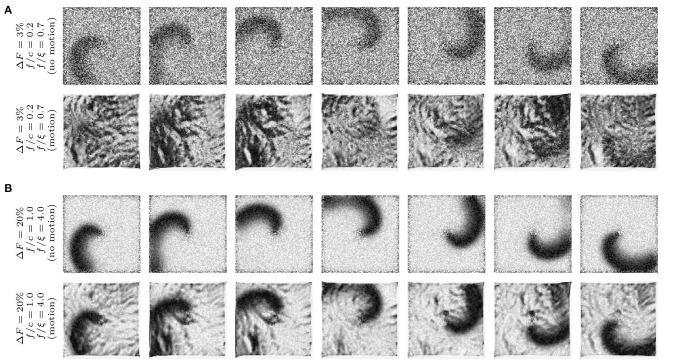Figure 3.
Synthetic optical mapping videos (pixel-wise normalized) with simulated spiral waves on a deforming heart surface. The spiral wave pattern is caused by electrical activity and displayed as an intensity decrease which is typically seen during voltage-sensitive optical mapping. Clockwise rotating spiral wave with two different signal strengths f: (A) weak signal (ΔF/F = 3%) and (B) strong signal (ΔF/F = 20%) on non-deforming (top sequence) and deforming (bottom sequence) heart surface. The noise ξ is constant in all image sequences (ξ = 0.03) even though it appears to be stronger in (A) due to the pixel-wise normalization (pixel intensities I ∈ [0, 1] dimensionless normalized units, n.u.). The amplitude of motion is the same in all image sequences ( pixels). On the deforming surface the spiral wave pattern is superimposed by motion artifacts. (B) Due to the large signal strength f, the spiral wave is still visible on the deforming medium and motion artifacts are comparatively low. The amount of motion artifacts depends on the signal-to-contrast ratio fc = |f|/c, the ratio of fluorescence signal strength f to the strength of the local contrast c or short-scale intensity gradients in the image (c constant in all images).

